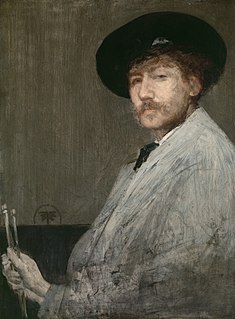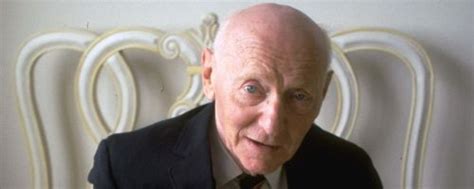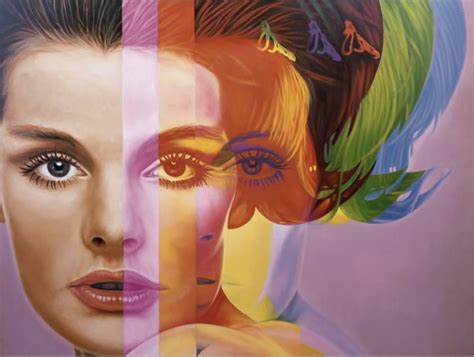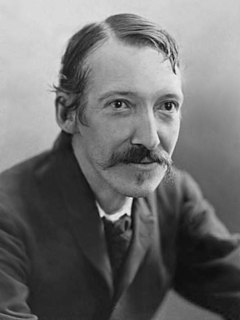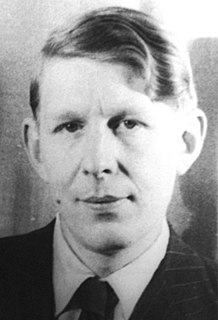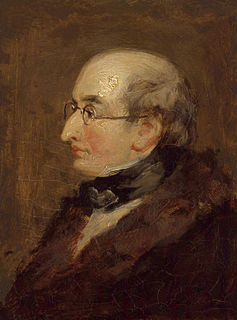A Quote by James Whistler
It is for the artist... in portrait painting to put on canvas something more than the face the model wears for that one day; to paint the man, in short, as well as his features.
Related Quotes
You have bits of canvas that are unpainted and you have these thick stretcher bars. So you see that a painting is an object; that it's not a window into something - you're not looking at a landscape, you're not looking at a portrait, but you're looking at a painting. It's basically: A painting is a painting is a painting. And it's what Frank Stella said famously: What you see is what you see.
Imagine a master painting that's never finished...when you can only build on previous work, you become limited by what you can paint...If you are in the midst of painting a forest full of tall tress and hanging vines, it is rather difficult to wake up the next day and suddenly turn that paining into the beach and ocean...We have to treat each day like a black canvas on which we can paint. Yesterday might have been paining flowers, but today you can paint cars or horses. A new day represents a chance for renewal.
An honest self-portrait is extremely rare because a man who has reached the degree of self-consciousness presupposed by the desire to paint his own portrait has almost always also developed an ego-consciousness which paints himself painting himself, and introduces artificial highlights and dramatic shadows.
I always get into arguments with people who want to retain the old values in painting - the humanistic values that they always find on the canvas. If you pin them down, they always end up asserting that there is something there besides the paint on the canvas. My painting is based on the fact that only what can be seen there is there... What you see is what you see.
Manet wanted one day to paint my wife and children. Renoir was there. He took a canvas and began painting them, too. After a while, Manet took me aside and whispered, 'You're on very good terms with Renoir and take an interest in his future - do advise him to give up painting! You can see for yourself that it's not his metier at all.
I get inspiration from things that have nothing to do with painting: caricature, items from newspapers, sights in the street, proverbs, nursery-rhymes, children's games and songs, nightmares, desires, terrors. ... That question [why do you paint?] has been put to me before and my answer was, 'To give terror a face.' But it's more than that. I paint because I can't help it.
When the artist is truly the servant of the work, the work is better than the artist; Shakespeare knew how to listen to his work, and so he often wrote better than he could write; Bach composed more deeply, more truly than he knew, Rembrandt's brush put more of the human spirit on canvas than Rembrandt could comprehend. When the work takes over, then the artist is enabled to get out of the way, not to interfere. When the work takes over, then the artist listens.
The portrait painter... If he insults his sitters his occupation is gone. Whether he paints the should instead of the features, or the latter with all its natural blemishes, he is as presumptuous as if he shouted, 'What a face. Hide it.' which would never do, although it is analogous to what landscape painters are doing every day.
The explanation of the propensity of the English people to portrait painting is to be found in their relish for a Fact. Let a man do the grandest things, fight the greatest battles, or be distinguished by the most brilliant personal heroism, yet the English people would prefer his portrait to a painting of the great deed. The likeness they can judge of; his existence is a Fact. But the truth of the picture of his deeds they cannot judge of, for they have no imagination.
I used to flirt with fundamentalism, and I had this idea that creation was something that happened. Now I see creation as something that is happening. Hundreds of millions of stars are still being born every day. Creation is an ongoing process. The Artist has not yet cleaned out the brushes. The paint is still wet. Human beings are the small clumps of clay and breath, and we have been handed brushes of our own, like young artist apprentices. The brushes aren't ours, nor the paint or canvas, but here they are in our hands, on loan. What shall we make?
